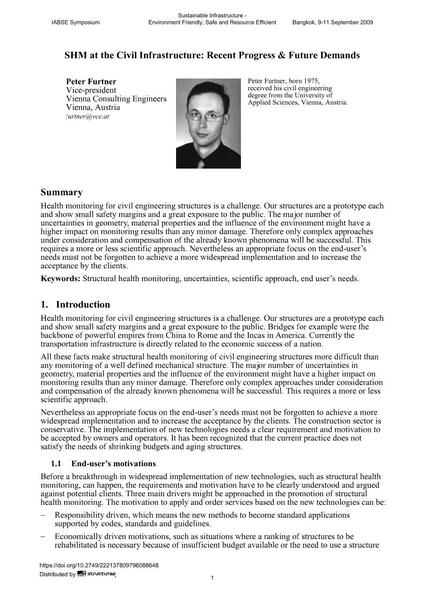SHM at the Civil Infrastructure: Recent Progress & Future Demands

|
|
|||||||||||
Détails bibliographiques
| Auteur(s): |
Peter Furtner
|
||||
|---|---|---|---|---|---|
| Médium: | papier de conférence | ||||
| Langue(s): | anglais | ||||
| Conférence: | IABSE Symposium: Sustainable Infrastructure - Environment Friendly, Safe and Resource Efficient, Bangkok, Thailand, 9-11 September 2009 | ||||
| Publié dans: | IABSE Symposium Bangkok 2009 | ||||
|
|||||
| Page(s): | 1-9 | ||||
| Nombre total de pages (du PDF): | 7 | ||||
| Année: | 2009 | ||||
| DOI: | 10.2749/222137809796088648 | ||||
| Abstrait: |
Health monitoring for civil engineering structures is a challenge. Our structures are a prototype each and show small safety margins and a great exposure to the public. The major number of uncertainties in geometry, material properties and the influence of the environment might have a higher impact on monitoring results than any minor damage. Therefore only complex approaches under consideration and compensation of the already known phenomena will be successful. This requires a more or less scientific approach. Nevertheless an appropriate focus on the end-user’s needs must not be forgotten to achieve a more widespread implementation and to increase the acceptance by the clients. |
||||
